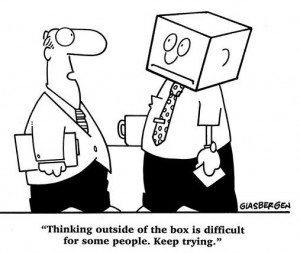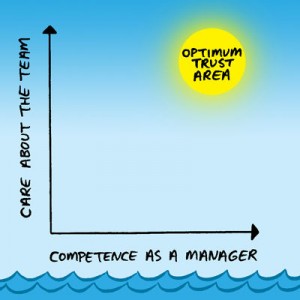Better Leaders: Build purpose and get out of the way
Your brand is a lagging indicator of the quality of your culture, and your culture is driven by the level of engagement in the organization. Positive and constructive leadership is the biggest driver of the habitat and the mindsets of the people in the organization that make that engagement possible. The goal is to draw those discretionary qualities from people in the organization – initiative, creativity, passion – that can’t be bought. You can dictate obedience, you can hope for loyalty, and you can even buy expertise. But you can’t buy those discretionary qualities of initiative, creativity, and passion that must come from all levels to create next-generation innovative value.
Since no longer loyalty, obedience, and even expertise constitute competitive advantage, your managers and leaders need to be focused on creating those environments and leading with those attributes that build creative, connected and engaged people. Only then will we find real deviation from the mediocre middle that will yield innovation – the kind of product and service innovation that creates sustainable value. Agreed?
In which case, the behaviors and influence that managers and leaders play in the organization have the ability to make a huge difference in eliciting those qualities of engagement that exist in everyone. Many companies understand this intuitively and have active policies to bring out the best in their people.
Dell Computers conducts training to help their people use social media and help them understand they are all brand ambassadors. Dell doesn’t leave the social branding to just one small department in the organization, everyone is expected to participate. Disney has famously focused on employee satisfaction, not customer satisfaction, with the recognition that happy employees create great customer experiences.
We have to thank Bob Sutton of Stanford University, for awareness of this fun study his colleague Deborah Gruenfeld conducted. Gruenfeld conducted a research study in which they brought together students in groups of three. One student was chosen the “boss” or arbiter, and the other two were asked to construct solutions to various issues on campus – making the campus more green, or improving transportation, or cafeteria services. The task itself was a red herring. What the researchers were most interested in was the role of power newly bestowed to one of the students.
During the session in which the “boss” is asked to evaluate the quality of the proposals from each of the two other students, the researchers bring in a plate of five cookies. After they each take a cookie, there’s two left. Every culture is aware of the social taboo against taking the last cookie so the cookie that’s in play here is the fourth. Consistently, the appointed “boss” was much more likely to take the fourth cookie, and to exhibit “disinhibited eating.” That is, chewing with their mouth open and leaving more crumbs.
It’s an amusing story but goes to the core of what Gruenfeld calls the Power Poisoning Effect. That is, those in a place of power tend to:
• Give greater value to their own ideas and initiatives
• Give lesser value to the ideas and initiatives of subordinates
• Think that the rules don’t apply to them
• Have greater difficulty controlling their own impulses

The message for leaders is that when there is a lack or either will or skill, you are needed to step in to guide, facilitate and aid contributors. And when there is a high level of both will and skill, sometimes the best thing you can do is get out of the way.

 Want to build a great marriage? Create positive teams that go the duration? Be a better boss, not a
Want to build a great marriage? Create positive teams that go the duration? Be a better boss, not a 

